How to Survive a Car Crash
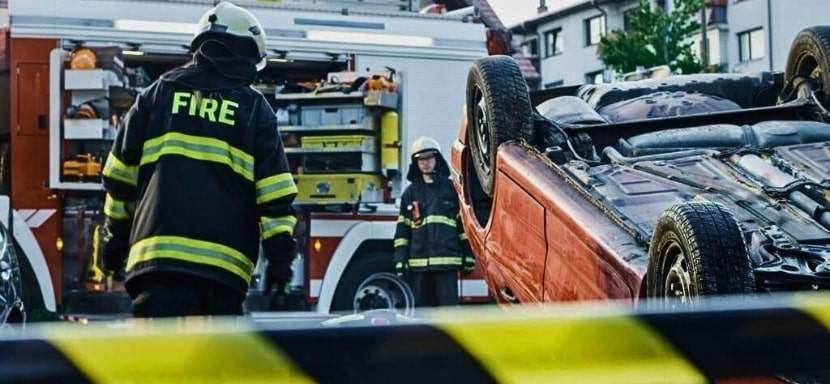
Car Crash Survival Tips
Even the best driver in the world can be involved in a car crash and find themselves in a survival situation. Here, you will learn a few road skills to keep yourself safe on America’s roads and highways.
The power of technology has made today’s vehicles safer than in the past. However, most car accidents are caused by human error.
Beware of distracted drivers. They are the leading cause of car crashes on America’s roadways.
Maintain Your Vehicle
Keep your car running smoothly by maintaining preventive maintenance such as oil changes, brake services, and tire rotations. These types of check-ups will keep your vehicle in tip-top shape.
If you have a check engine, brake, or airbag light comes on, don’t procrastinate. Get to a mechanic and have it checked out. You will want these systems to work correctly in case of an emergency.
Did You Know?
Traffic accidents cost the United States approximately 1 trillion dollars a year and kill as many as 42,000 Americans.
Seat Belt Secured
The seat belt is probably your vehicle’s most important safety item. However, if you neglect to wear it, it will not be able to do what it intended. According to the National Highway Traffic Safety Administration (NHTSA), nearly half of all car crash fatalities are due to improper seat belts.
To properly wear your seat belt, the lap portion should sit low across the hips and not on your stomach. The shoulder belt should be tight and comfortable across your chest. Please ensure all passengers in your vehicle have their seat belts adequately secured.
Be Comfortable
Manufacturers are required to adhere to strict safety rules and regulations for drivers.
When you get in your car, sit up straight and adjust the head headrest to sit close to the back of your head. Adjust the seat so you can comfortably reach the pedals without stretching or strain. You will then need to adjust the steering wheel and your mirrors so you have a nice view of your car.
This puts you in the optimal position at which the vehicle’s safety equipment is designed to protect you in the case of an accident.
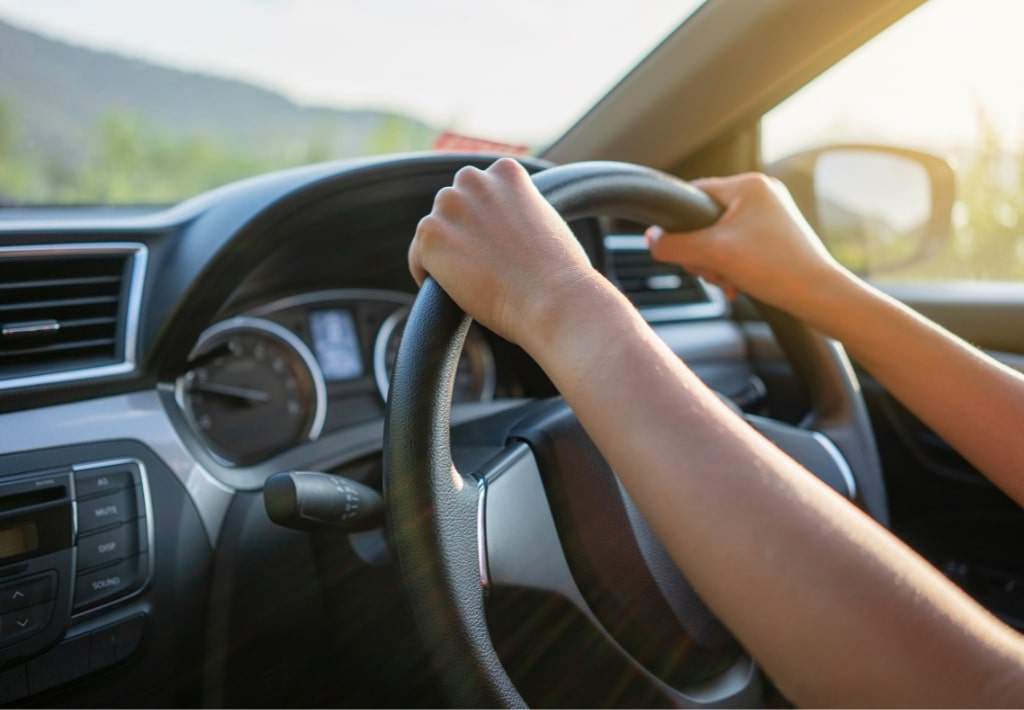
Flying Hazards
In the case of a car crash, anything loose in the vehicle can be a possible projectile. This includes passengers that are not secured by their seat belts.
Secure groceries or anything else you may be hauling in the truck, or make sure they are strapped down or securely stowed. The force imposed during an accident can throw loose objects throughout the car, and the last thing you need is for something to hit you in the head.
If you have pets, you may want to invest in a vehicle harness for your animal.
Phone Charged
Keep your phone charged at all times. Invest in an additional battery pack if you use your phone a lot.
If you’re involved in a car crash or witness one, first, you should clear the area (if applicable), dial 911, and get first responders on the way.
Killer Phones
Distracted driving is the leading cause of vehicle accidents in the United States. Eating, talking, and texting on a cell phone are the main distractors. Speeding is a close second, and drunk driving is third.
Small Tool Kit
A small first aid kit can be a handy item to have in your trunk. Not only will it help in case you’re in an accident, but It can also help if you are out and about with small children and they get a cut or scrape.
Having a seat belt cutter, glass breaker, pocket knife, or flashlight can come in very handy to help you quickly get out of your vehicle if you’re in a car crash, and your doors are jammed and can’t be opened. You can find these types of tools at your neighborhood auto parts store.
Car Crash Scenarios
If your brakes fail, the engine catches on fire, or your car flips while airborne, you must act fast.
Here’s what you should do in each survival scenario.
Brake Failure
Immediately turn on your hazard lights and honk your horn to alert drivers around you. Quickly and carefully check around your brake pedal for anything obstructing it from working correctly. If it’s not moving, you may have something that worked its way under it; try and kick it away with your foot.
Take your foot off the gas pedal and shift down a gear. If your vehicle has an automatic transmission, slowly shift down one gear at a time to slow the car. You do not want to shift too fast; the vehicle could jerk and make you lose control if you shift too fast. If your car has a standard transmission, do not put it in neutral; this will not allow you to use the engine’s natural braking ability. You should also not turn off the vehicle because you will lose power steering. With a standard transmission, you will want to downshift two gears at a time to slow the car and eventually bring yourself to a stop.
With vehicles equipped with anti-lock brakes, you will want to press the pedal to the floor. Doing this will engage the electronically-controlled brakes, and don’t fret; it may take a couple of seconds to begin to work.
If you have regular brakes on your vehicle, give the brake pedal a few pumps to build up fluid pressure. Slowly apply the parking brake (Do not slam it on), and apply even slow pressure with your foot or hand. This may cause the car to skid; if so, always steer into a skid. Make your way as far to the right as possible to get off the main road, and then call a tow truck or someone to help you get your car serviced.
If your brakes fail, do not attempt to drive the car until a certified mechanic has checked them out.
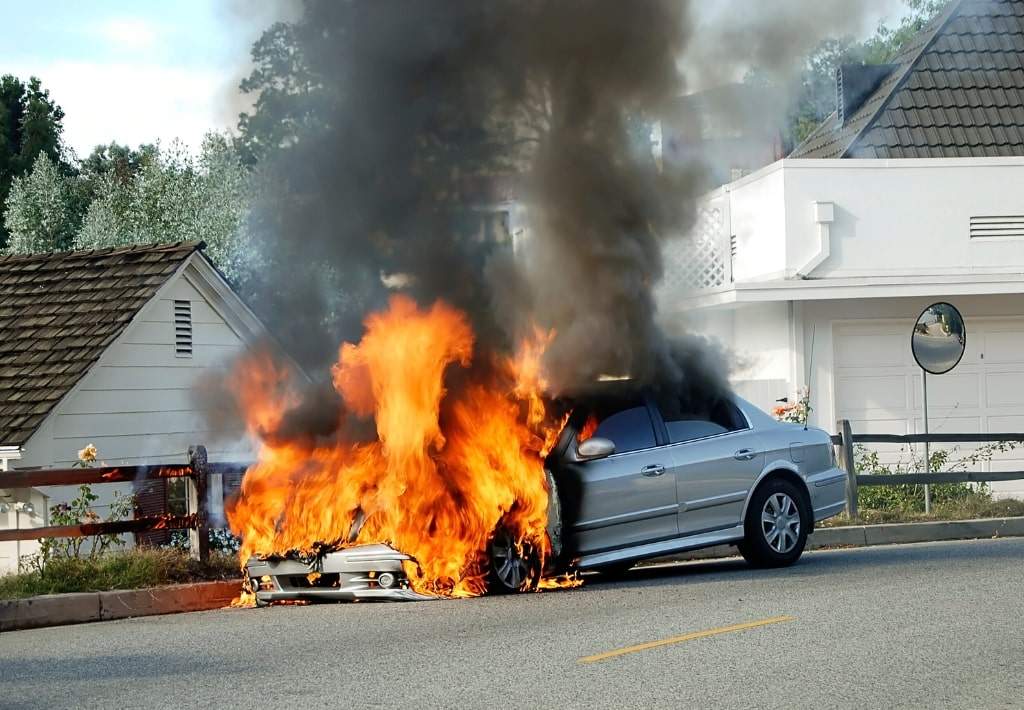
Engine Fire
There were over 174,000 car fires in 2015. Over half of these fires were because of mechanical failures, and about 25% were due to electrical issues. Keep your vehicle maintained and keep on a routine preventive maintenance schedule. Not only do most mechanics do the maintenance required, but they also run your vehicle through a quick inspection and will bring any noticeable problems to your attention.
While driving, if you think you smell burning plastic or see smoke. Pull over and turn the vehicle’s engine off immediately. Doing so will stop fuel flow and may keep a small, containable fire from becoming uncontrollable.
If smoke is already filling the cabin, crack a window to release any deadly fumes so you don’t lose consciousness. Don’t try to drive home or anywhere else, for that matter. Pull as far over to the right as possible to clear the roadway, get out of the car, and call 911 to have first responders on their way.
Car fires can spread very quickly. Don’t try to open the hood; the additional airflow will feed the fire, and the metal can get hot fast and could give you a nasty burn. It is best to let a professional put out the fire, wait for first responders, and not try to put it out by throwing water on it.
Car Flips Over
If you are in trouble, take your feet off the pedals so you don’t break your ankles or legs. You will also want to release the steering wheel, cross your arms, and hold your shoulders. All while pushing yourself into the seat.
Once the car rests upside down, stay calm, compose yourself with a couple of deep breaths, and assess the situation around you. Since you will be upside down, this may take a few seconds. Check for bumps, bruises, scrapes, cuts, broken bones, or head injuries. If you find yourself badly injured and not in additional harm’s way, stay put and wait for help to arrive.
Don’t prematurely take your seat belt off. That little head-first fall could hurt or even kill you. If you’re not hurt, ensure the area below you is free from glass and debris. Reach down and brace yourself on the ceiling of your car while pushing your feet on the floorboard before releasing your seatbelt. Once free of your belt, slowly let yourself down onto the ceiling.
Once on the ceiling, call carefully to the nearest opening. Once outside the vehicle, see if you can assist others trapped in the car. Move yourself and others safely from the vehicle if it catches on fire.
If you can’t get out of the vehicle, find your phone and call for help. Suppose you can’t sit tight and wait for police and first responders. Remember, the first few minutes after a vehicle has flipped is the most dangerous. You may not realize what’s happening and could walk straight into traffic while dazed and confused. The last thing you want to do is get hit by a car when you just survived a vehicle rollover.
Global Car Crash Facts
- Nearly 1.3 million people die in road crashes every year, an average of 3,287 deaths a day.
- Over half of all road traffic deaths occur among young adults between the ages of 15-44.
- An additional 20-50 million are injured or disabled annually.
- Each year, nearly 400,000 people under 25 die on the world’s roads; this is an average of over 1,000 a day.
- Over 90% of all road fatalities occur in low and middle-income countries, which have less than half of the world’s vehicles.
- Road traffic crashes rank as the 9th leading cause of death and account for 2.2% of all deaths globally.
- Unless something is done, road traffic injuries are predicted to become the fifth leading cause of death by 2030.
U.S. Car Crash Facts
- In the United States, approximately 42,000 people die in road crashes each year.
- Over 1,600 children under 15 years of age die each year on U.S. roadways.
- Road crashes are the single most significant annual cause of death of healthy U.S. citizens traveling abroad.
- Nearly 8,000 people are killed in crashes involving drivers ages 16-20.
- Car crashes cost the U.S. approximately $340 billion annually, or an average of $820 per person. However, this figure does not encompass additional expenses associated with car accidents, such as reduced quality of life and similar losses. Factoring in these considerations raises the annual cost to $1.4 trillion.
More Air, Land, and Sea Scenarios
How to Survive a Flash Flood While Driving
Surviving a flash flood while driving requires quick thinking, calmness, and a plan. This guide walks…
How to Survive a Hot Air Balloon Crash
Hot air balloon rides can be magical, with breathtaking views and a serene, floating sensation. But as…
How to Survive a Motorcycle Accident
Life on two wheels is exhilarating, but let’s not sugarcoat it—motorcycle wrecks are a real risk. Whether…
How to Survive a Helicopter Crash
If you ever find yourself in a helicopter plummeting toward the ground, the odds can feel stacked…
How to Survive Being Stuck in an Airport
Travelers love airports, right? You walk in with dreams of quick security checks, ample seating, and maybe…
Recent Survival Posts
How to Survive a Layoff
Layoffs feel personal—even when they’re not. One day, you’re responding to Slack messages and forwarding…
How to Survive a Drug Test
I never imagined I’d be so emotionally invested in a paper cup. But there I was, standing under the fluorescent…
How to Survive an Interrogation
If you’ve ever been caught in the crosshairs of an overly enthusiastic mall cop or stared down by someone…
How to Survive a Nightclub Shooting
Nightclubs pulse with life—lights flashing, music pounding, bodies packed tight on the dance floor. It’s a place to…
How to Survive a Bachelor Party
A bachelor party is a delicate mix of celebration, chaos, and questionable decision-making, wrapped…
More Air, Land, and Sea Survival Scenarios

How to Survive a Hot Air Balloon Crash
Hot air balloon rides can be magical, with breathtaking views and a serene, floating sensation. But as with any adventure, things can go awry. A hot air balloon crash is not a common air survival scenario, yet understanding how to respond effectively can make all the...
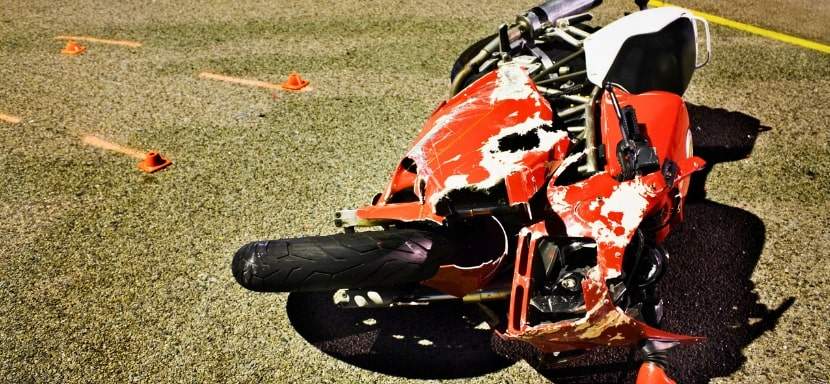
How to Survive a Motorcycle Accident
Life on two wheels is exhilarating, but let’s not sugarcoat it—motorcycle wrecks are a real risk. Whether you’re a seasoned rider or just learning, knowing how to survive a motorcycle wreck is crucial. By preparing beforehand, reacting wisely during the incident, and...
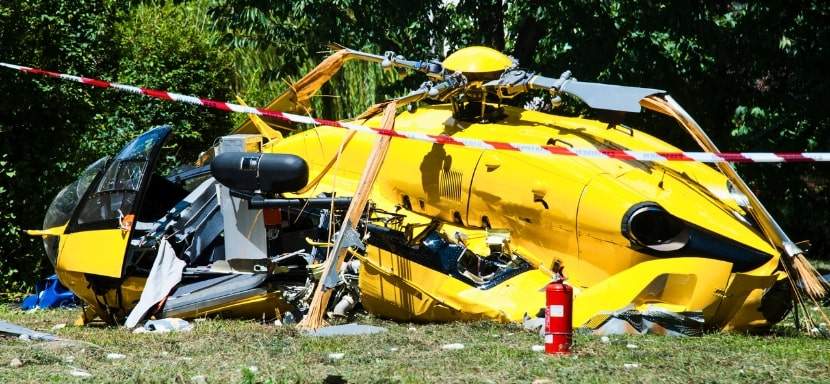
How to Survive a Helicopter Crash
If you ever find yourself in a helicopter plummeting toward the ground, the odds can feel stacked against you. You picture fiery explosions, wild spinning blades, and—worst of all—your life flashing before your eyes. But here’s the thing: helicopter crashes are...
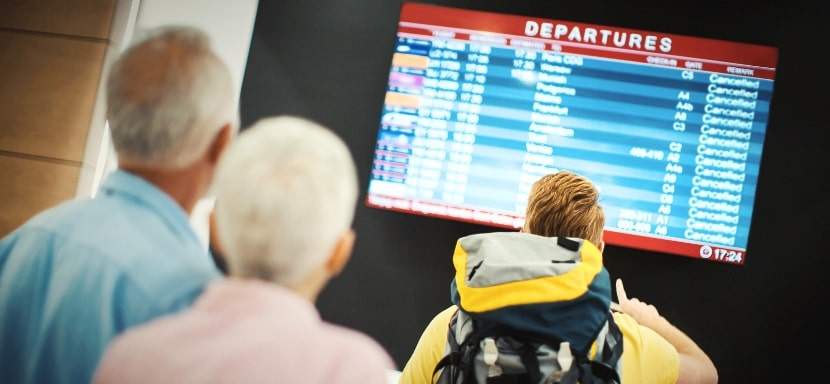
How to Survive Being Stuck in an Airport
Travelers love airports, right? You walk in with dreams of quick security checks, ample seating, and maybe a lounge with bottomless snacks. But what if your dream turns into a drawn-out nightmare, and you're stuck there for hours? Or worse, overnight. We've all been...

How to Survive Jet Lag
We’ve all been there: you board a plane full of excitement, jet off to a far-flung destination, and when you arrive, you feel like you’ve been hit by a bus. This, my friends, is jet lag. A cruel reminder that while airplanes can soar at 600 mph, our bodies are...
More Survival Scenarios

How to Survive a Layoff
When the Floor Falls Out: The Reality of a Layoff Layoffs feel personal—even when they're not. One day, you're responding to Slack messages and forwarding emails. Next, you're staring at your monitor as it logs you out... for good. Whether it's a restructuring, a...

How to Survive a Drug Test
The Cup, The Room, The Truth I never imagined I’d be so emotionally invested in a paper cup. But there I was, standing under the fluorescent hum of a strip-mall clinic, trying to recall the last time I ate a poppy seed bagel. That’s the thing about drug tests—they...

How to Survive an Interrogation
If you've ever been caught in the crosshairs of an overly enthusiastic mall cop or stared down by someone in a uniform with a clipboard and a glare, you’ve felt it — the chilly fingers of interrogation anxiety. And while most of us imagine interrogation scenes as...

How to Survive a Nightclub Shooting
Nightclubs pulse with life—lights flashing, music pounding, bodies packed tight on the dance floor. It’s a place to escape, feel the rhythm, and lose yourself in the crowd. But that same energy can turn deadly in seconds, transforming a night of fun into one of the...

How to Survive a Bachelor Party
A bachelor party is a delicate mix of celebration, chaos, and questionable decision-making, wrapped in the noble intention of sending the groom off into married life with a night he’ll (hopefully) remember. It’s a ritual as old as time—well, as old as men deciding...

How to Survive Your First Time at the Gym
Walking into a gym for the first time can feel like stepping into an alien world. The machines hum with purpose, the regulars move confidently, and you’re left standing there, clutching your water bottle, wondering whether you’re in the right place—or on the right...

How to Survive a Worldwide Communications Breakdown
Imagine waking up to silence. Your phone doesn’t buzz, your email won’t load, and even your local radio station crackles with static. A worldwide communications breakdown has hit. What next? For many, this doomsday scenario may sound like the opening lines of a...
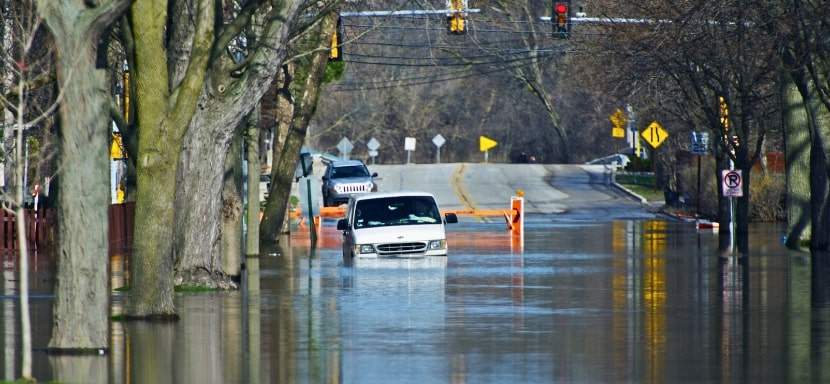
How to Survive a Flash Flood While Driving
Surviving a flash flood while driving requires quick thinking, calmness, and a solid plan to ensure your safety. Preparation can make all the difference between a close call and a catastrophe in emergencies like this. This guide provides practical advice to protect...
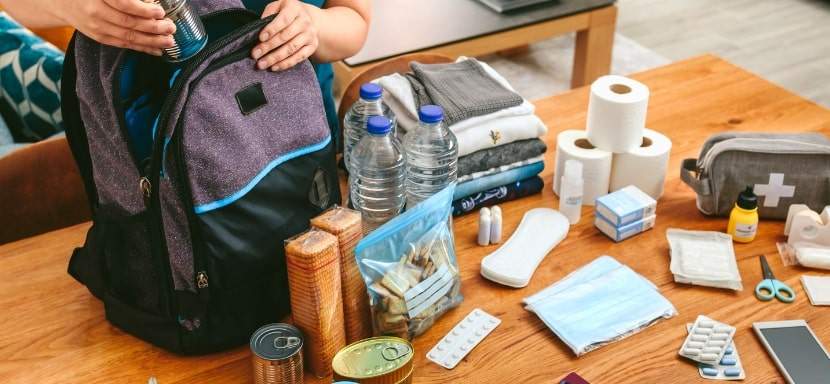
How to Build an Emergency Kit
Emergencies don’t knock politely at the door. They barge in, uninvited, like a distant relative with a penchant for drama, turning your world upside down without warning. Whether it’s a power outage, a natural disaster, or an unexpected evacuation, the key to staying...

How to Protect Yourself From Insects in the Wild
There’s nothing like being out in the wild—birdsong echoing through the trees, the fresh scent of earth, and a deep sense of peace that makes you think, “Ah, this is what life is about.” But then comes the buzzing. Mosquitoes, ticks, and flies swoop in like uninvited...
